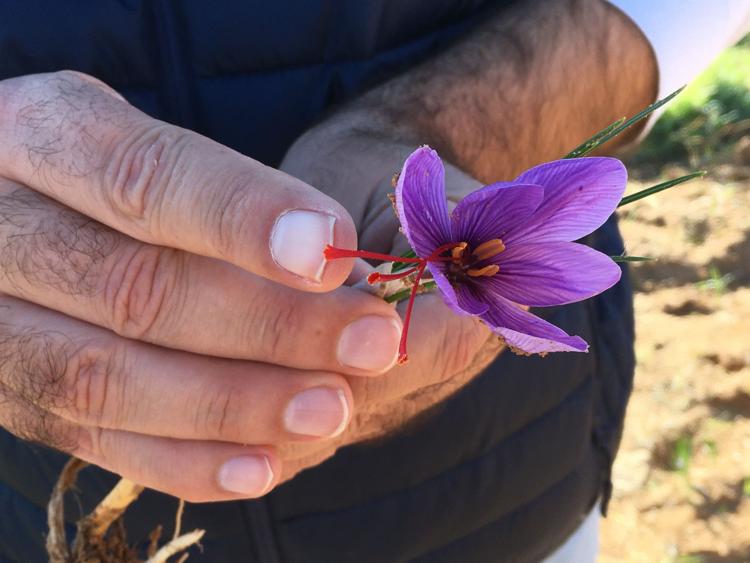Oh saffron, you are a continuing mystery

The miniscule, bright-orange stigma of the tiny purple saffron crocus are harvested to make saffron.
Janet Podolak
Developing recipes is one of the more challenging aspects of my work here at The News-Herald. It’s an even bigger challenge when the dishes originated in another country and I am dealing with another language, measures in metric and ingredients that are foreign to me.
With help from the internet, translating metric measures into cups, teaspoons and tablespoons isn’t as difficult as it once was — but some ingredients continue to baffle me.
One of them is saffron.
But one of the great benefits of this job is that I am always learning, and my saffron knowledge has recently taken a leap — mostly by tasting.
While in Spain, I attended the annual Saffron Festival in Consuegra, during the last weekend in October. Consuegra is in Castilla-LaMancha, directly south of Madrid, and best known for being the setting for “Don Quixote,” the 17th-century story by Miguel Cervantes developed into “The Man of LaMancha” musical.
I don’t know much about saffron except that it’s the most expensive spice in existence and an ingredient in rice and bouillabaisse. Slightly bitter but fragrant, it’s also in many other dishes served in Spain.
It’s derived from a purple crocus that blooms for only two weeks in autumn in the dry fields around Consuegra, where it must be harvested within a week of blooming. Three tiny, bright-orange, pollen-bearing stamen from each flower are collected and then dried to make saffron. The threads are used sparingly — thanks to both its cost and its intense flavor. At Heinen’s in Mentor, where I shop, it’s almost $35 per gram.
Most of the spice is grown in Iran. However, because the U.S. doesn’t trade with Iran, our saffron comes from Spain, for the most part. You’ll be reading more about saffron and my Spain trip in travel features to be published online and Sundays in the Travel section this winter.
When I interviewed Mentor cook Helga Stang about cookie recipes that were those of her mother and mother-in-law in Germany, I could empathize about the difficulty she had translating them for use in this country.
I am currently struggling with a recipe for Pollo en Pepitoria, a chicken dish I think readers will like.
With help from a Spanish-speaking friend, I interviewed a chef in Spain about the recipe and got the basics of the dish we had for dinner. It combined chicken, ham, sherry, nutmeg, almonds and saffron and is topped with a chopped hard cooked egg — ingredients I’d never contemplated using together.
To learn about the techniques used in assembling and cooking the dish, I searched online for the recipe, finding several versions in English and more in Spanish — which I don’t speak.
Generally speaking, recipes we use list ingredients in order of their use, following up with instructions on how to put them together. I’ll be preparing and eating my version of Pollo en Pepitoria in the next several days and hope to finally achieve a recipe I can share with readers.
If any of you know this dish — or others in which saffron is used — I’d appreciate hearing from you by email.



Recent Comments